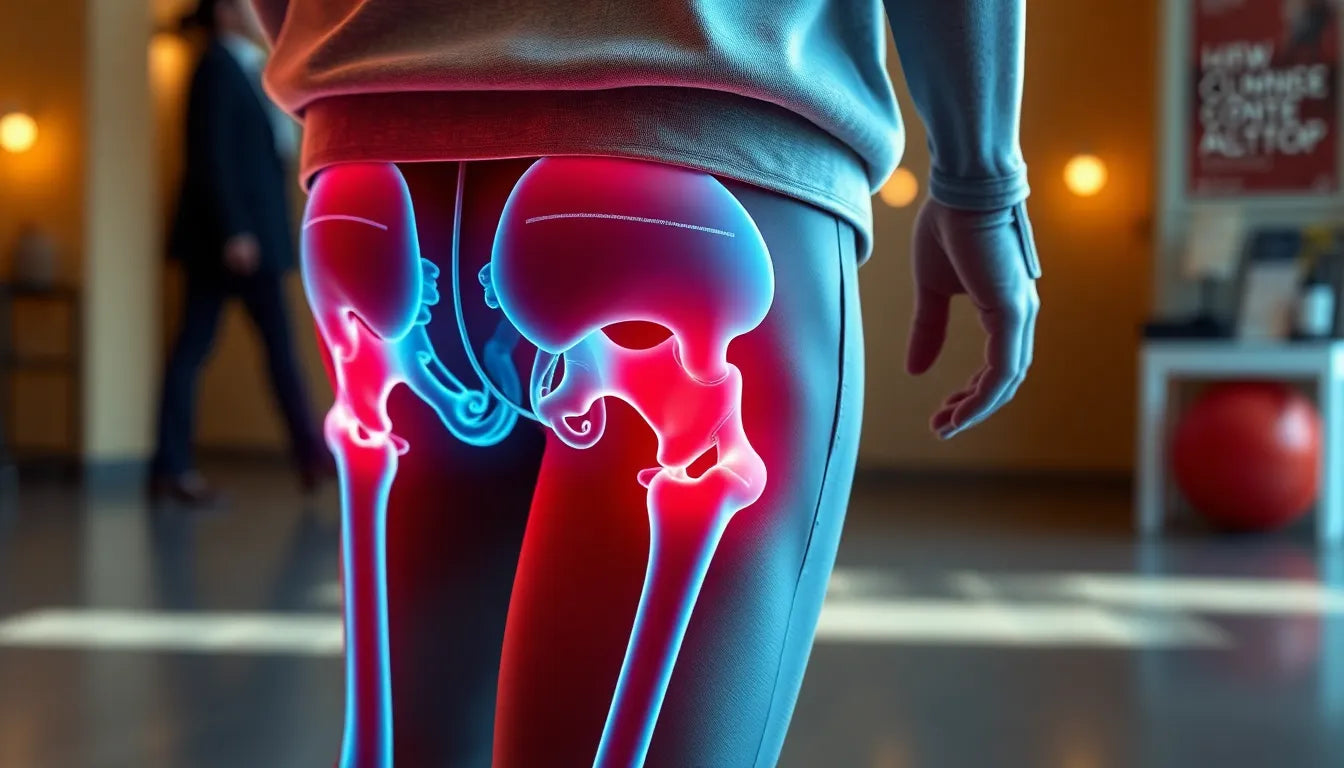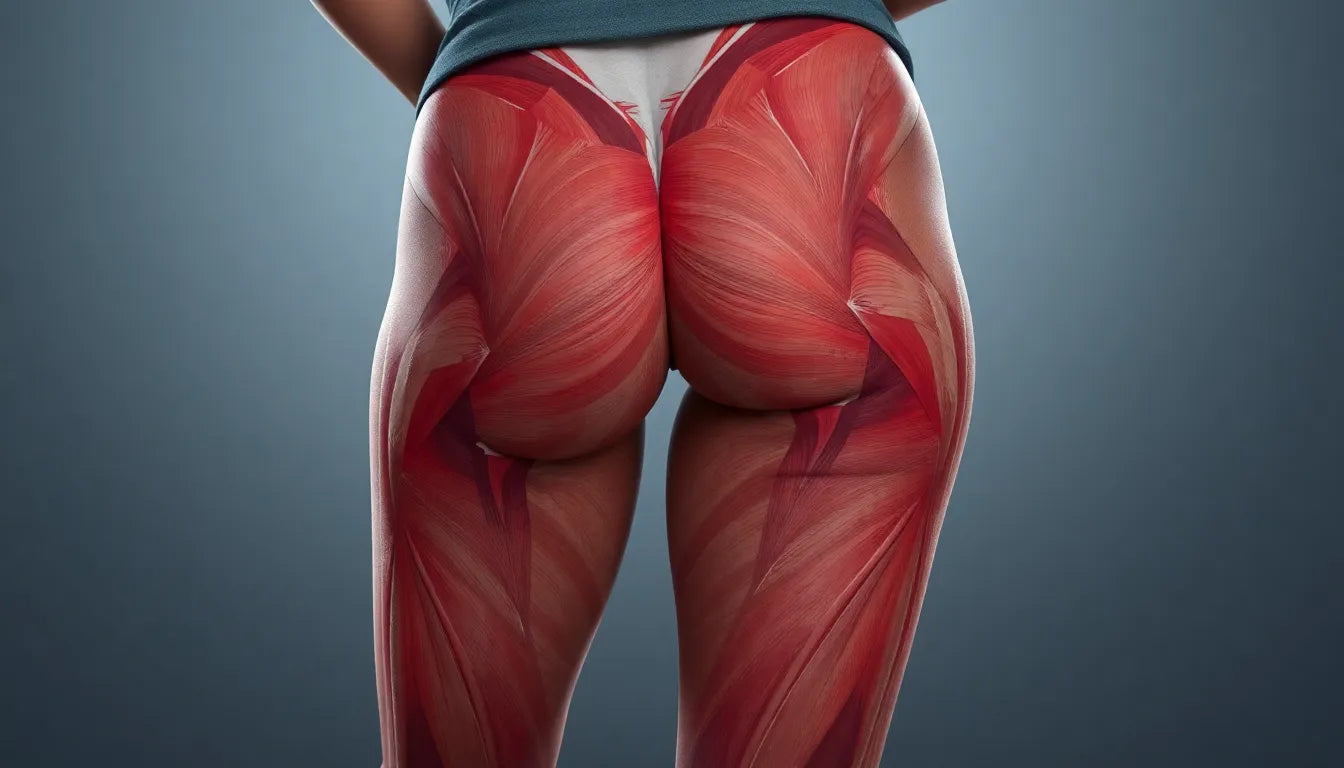Hip bursitis is a condition that can significantly impact your daily life, often causing persistent pain and discomfort around the hip area. It involves the inflammation of the bursae, which are small, fluid-filled sacs that act as cushions between bones and soft tissues. This inflammation can lead to pain that makes simple activities such as walking, climbing stairs, or even sleeping on your side challenging. Understanding hip bursitis is crucial for managing its effects and improving your quality of life.
Understanding the significance of hip bursitis
Hip bursitis is more than just a minor annoyance; it is a condition that can severely limit your mobility and daily functioning. The pain associated with hip bursitis is typically felt on the outside of the hip and can radiate down the side of the thigh. This discomfort can be sharp and intense, especially when pressure is applied to the area, such as when lying on the affected side. The purpose of this post is to delve into the symptoms, causes, and effective management strategies for hip bursitis, offering insights into how you can alleviate the pain and regain control over your activities.
Why understanding hip bursitis matters
Hip bursitis is a prevalent condition, particularly among adults who lead active lifestyles or have physically demanding jobs. It is not uncommon for athletes, construction workers, and other individuals who engage in repetitive movements to experience this condition. The impact of hip bursitis on your quality of life can be profound, affecting not only your physical capabilities but also your mental well-being. Early intervention is key to preventing the condition from worsening and to ensure that you can continue to enjoy your usual activities without interruption.
Recognizing the symptoms and understanding the risk factors associated with hip bursitis can empower you to take proactive steps toward managing the condition. By exploring the various strategies for relief, from lifestyle adjustments to medical treatments, you can find the approach that best suits your needs. This post aims to provide a comprehensive overview of hip bursitis, equipping you with the knowledge to tackle the pain effectively and enhance your overall well-being.
Symptoms and types of hip bursitis
Hip bursitis manifests through a variety of symptoms, which can significantly impact daily activities. Common symptoms include persistent pain that intensifies when lying on the affected side, walking, or climbing stairs. This discomfort is often accompanied by tenderness over the hip and, in some cases, noticeable swelling. Understanding the types of hip bursitis is crucial for effective management.
Trochanteric bursitis is the most prevalent form, characterized by pain on the outside of the hip or thigh. This type often results from repetitive stress or direct trauma to the area. Iliopsoas and ischial bursitis, on the other hand, cause pain in the groin or upper buttock, respectively. These types are less common but can be equally disruptive. Septic hip bursitis is a rare condition that involves infection, leading to additional symptoms such as fever and systemic signs of infection, requiring immediate medical attention.
Causes and risk factors associated with hip bursitis
The causes of hip bursitis are varied, with repetitive movement and trauma being the most common culprits. Activities that involve frequent hip movement, such as running or cycling, can lead to overuse of the bursae, resulting in inflammation. Additionally, systemic conditions like rheumatoid arthritis, gout, or diabetes can predispose individuals to bursitis. Poor posture and obesity further exacerbate the risk by increasing pressure on the hip joints.
Several risk factors contribute to the likelihood of developing hip bursitis. Age plays a significant role, as the condition is more common in older adults. Those with physically demanding jobs or hobbies, such as athletes or laborers, are also at increased risk. Understanding these causes and risk factors is essential for both prevention and management of hip bursitis.
Diagnosis and treatment options
Diagnosing hip bursitis typically involves a physical examination, during which a healthcare provider will assess pain and tenderness in the hip area. In some cases, further diagnostic tests like aspiration or imaging may be necessary to rule out other conditions or confirm the diagnosis. Consulting a specialist is crucial if the pain persists or worsens, as they can provide a comprehensive evaluation and tailor a treatment plan to individual needs.
Conservative management is often the first line of treatment for hip bursitis. This approach includes rest, ice application, and the use of nonsteroidal anti-inflammatory drugs (NSAIDs) to reduce pain and inflammation. Activity modification is also recommended to avoid movements that exacerbate symptoms. Physical therapy plays a pivotal role, focusing on stretching and strengthening exercises that target the hip, back, and core muscles. Assistive devices like canes or hip braces may be used temporarily to alleviate pressure on the hip.

Lumbar support belt
Adjustable belt offering lower back support, helps relieve tension and pain from daily activities.
For cases where conservative management is insufficient, advanced treatments are available. Corticosteroid injections can provide significant pain relief by reducing inflammation, although their use is limited to prevent potential tissue damage. If swelling persists, aspiration of the bursa may be performed to remove excess fluid. Surgical intervention, including traditional and endoscopic methods, is considered a last resort and is typically reserved for severe cases that do not respond to other treatments.
By understanding the symptoms, causes, and treatment options for hip bursitis, individuals can take proactive steps toward managing the condition effectively. Early diagnosis and a tailored treatment plan are key to alleviating pain and restoring mobility, allowing individuals to resume their daily activities with minimal disruption.
Prevention strategies for managing hip bursitis
Preventing hip bursitis involves adopting lifestyle changes that minimize stress on the hip joints and promote overall joint health. One of the most effective strategies is maintaining a healthy weight, which reduces the load on the hips and decreases the risk of inflammation. Incorporating regular stretching and strengthening exercises into your routine can also bolster hip stability and flexibility, helping to prevent the onset of bursitis.
Proper biomechanics, or the way you move during activities, is crucial in preventing hip bursitis. Ensuring you use correct posture and techniques, especially during physical activities or repetitive tasks, can significantly decrease the risk. For those involved in sports or physically demanding jobs, modifying activities to reduce repetitive stress on the hips is advisable. Using ergonomic aids, such as hip braces or support cushions, can further alleviate pressure and provide additional support.

Men's Posture Shirt™ - White
Posture-correcting shirt for men with Neuroband™ tech, relieves pain and improves postural awareness.
Emerging trends and considerations in hip bursitis treatment
As medical technology advances, there is a growing interest in minimally invasive procedures and integrative therapies for managing hip bursitis. These emerging treatments offer promising alternatives to traditional methods, focusing on reducing recovery time and enhancing patient comfort. Minimally invasive techniques, such as arthroscopic surgery, allow for precise intervention with minimal disruption to surrounding tissues.
Integrative therapies, including acupuncture and targeted physical therapy, are gaining popularity as complementary approaches to traditional treatments. These therapies aim to address pain and inflammation holistically, promoting overall well-being. Early diagnosis and adherence to prescribed therapy routines remain critical for optimal outcomes, underscoring the importance of timely medical consultation and personalized treatment plans.
Frequently Asked Questions
Can hip bursitis heal without surgery?
Yes, most cases of hip bursitis can heal without surgery. Conservative management, including rest, ice application, and physical therapy, is often effective in reducing inflammation and alleviating pain. Early intervention and adherence to treatment recommendations are key to successful recovery.
What exercises help hip bursitis?
Exercises that focus on stretching the iliotibial (IT) band and strengthening the hip, back, and core muscles are beneficial for individuals with hip bursitis. These exercises help improve flexibility, reduce tension on the hip joints, and enhance overall stability, aiding in both recovery and prevention.
How do ergonomic aids prevent bursitis?
Ergonomic aids, such as hip braces and support cushions, help prevent bursitis by reducing strain on the hip joints and improving posture. These aids provide additional support during activities, minimizing repetitive stress and promoting proper alignment, which is essential for both prevention and recovery from bursitis.
By implementing these prevention strategies and staying informed about the latest treatment options, individuals can effectively manage hip bursitis and maintain an active, pain-free lifestyle. Early diagnosis and a proactive approach to treatment are vital in ensuring long-term joint health and mobility.
Källor
- American Academy of Orthopaedic Surgeons. "Hip Bursitis."
- Aurora Health Care. "Hip Bursitis."
- Mayo Clinic. "Bursitis: Diagnosis and Treatment."
- NHS. "Bursitis."
- Cleveland Clinic. "Trochanteric Bursitis."
- Hoag Orthopedic Institute. "Hip Bursitis."
- Arkansas Surgical Hospital. "Symptoms & Solutions: Hip Bursitis."
- Princeton Orthopaedic Associates. "Hip Bursitis Treatment."
- Froedtert & the Medical College of Wisconsin. "Hip Bursitis."


















